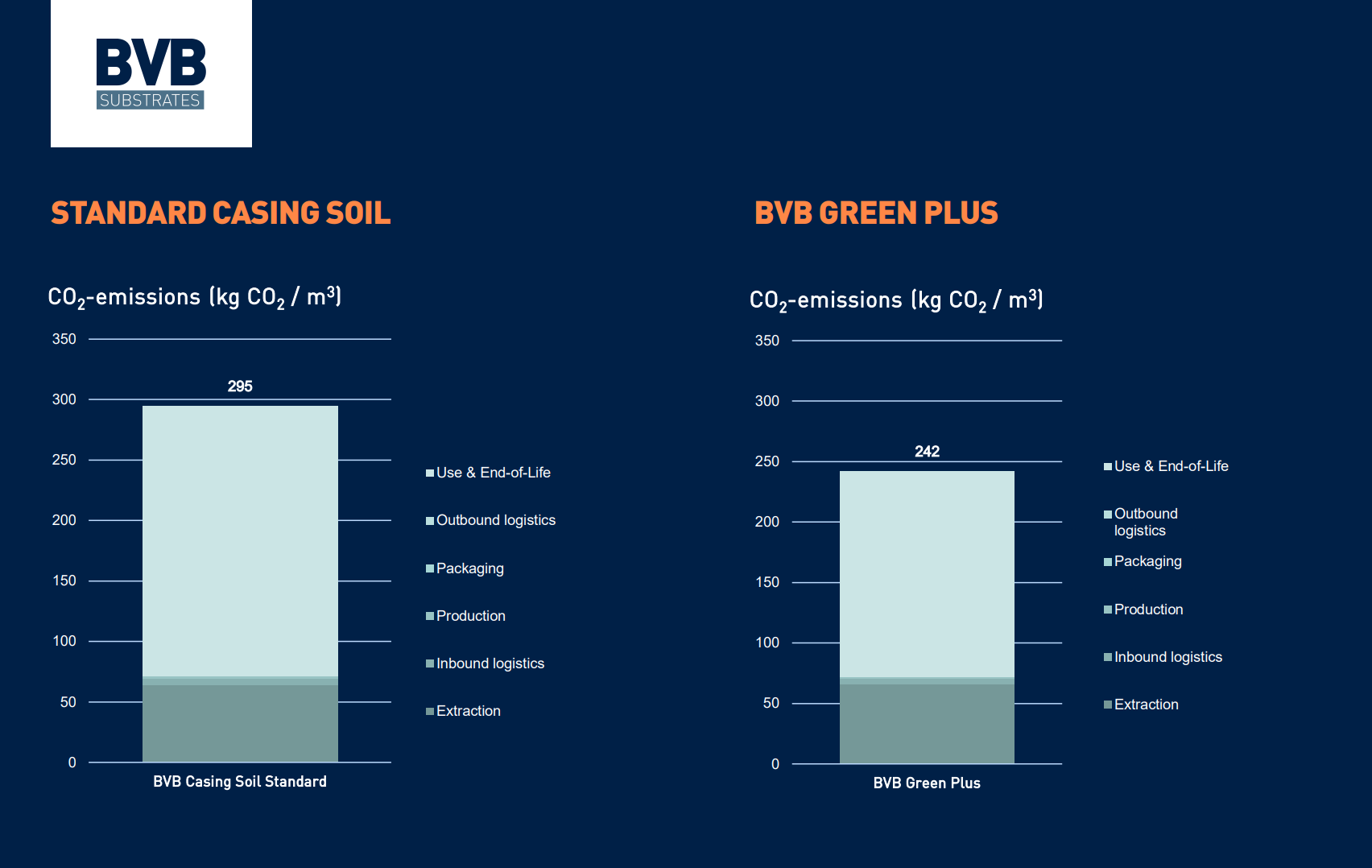How casing soil scores on sustainability
When we talk about sustainability in horticulture, and in mushroom cultivation in particular, we urge the industry to use an honest perspective. Let’s look into the way our industry calculates environmental impact, and how our latest innovation: BVB Green Plus fits into this story.
European standards and scientific methods
You might have read about LCA: the Life Cycle Assessment. This is a scientific method to determine the environmental impact of the entire life cycle of a product.
By performing an LCA, you gain insight into several production components such as:
- the impact of raw material extraction
- impact of raw material processing
- impact packaging materials
- impact logistics (at all stages of production)
- impact of recycling
Other factors like resource scarcity, climate change and biodiversity are also included in this assessment.
Additionally, the European Commission initiated the development of another new and improved calculation method to determine the environmental impact of products in a complete and standardised way. This is the PEF: Product Environmental Footprint method. It’s based on the LCA method and provides a uniform approach within the entire horticultural industry,
More sustainable mushroom cultivation with BVB Green Plus
As you might have heard, we’ve introduced our latest casing soil innovation as “the next generation” of casing soil, and with good reason. This new type of casing soil offers the same level of reliability, safety and quality, and the same excellent yield that growers know to get from BVB Substrates’s casing soils. This makes BVB Green Plus very much “fit for purpose” while also improving the score of the PEF calculation. In the image below you see a simplified representation of this score compared to other, traditional casing soils.

This special type of casing soil is now in use at various cultivation sites in the Netherlands and Germany, with very positive results. Please reach out to our experts if you wish to learn more!
